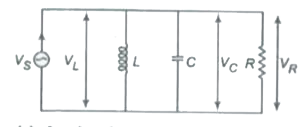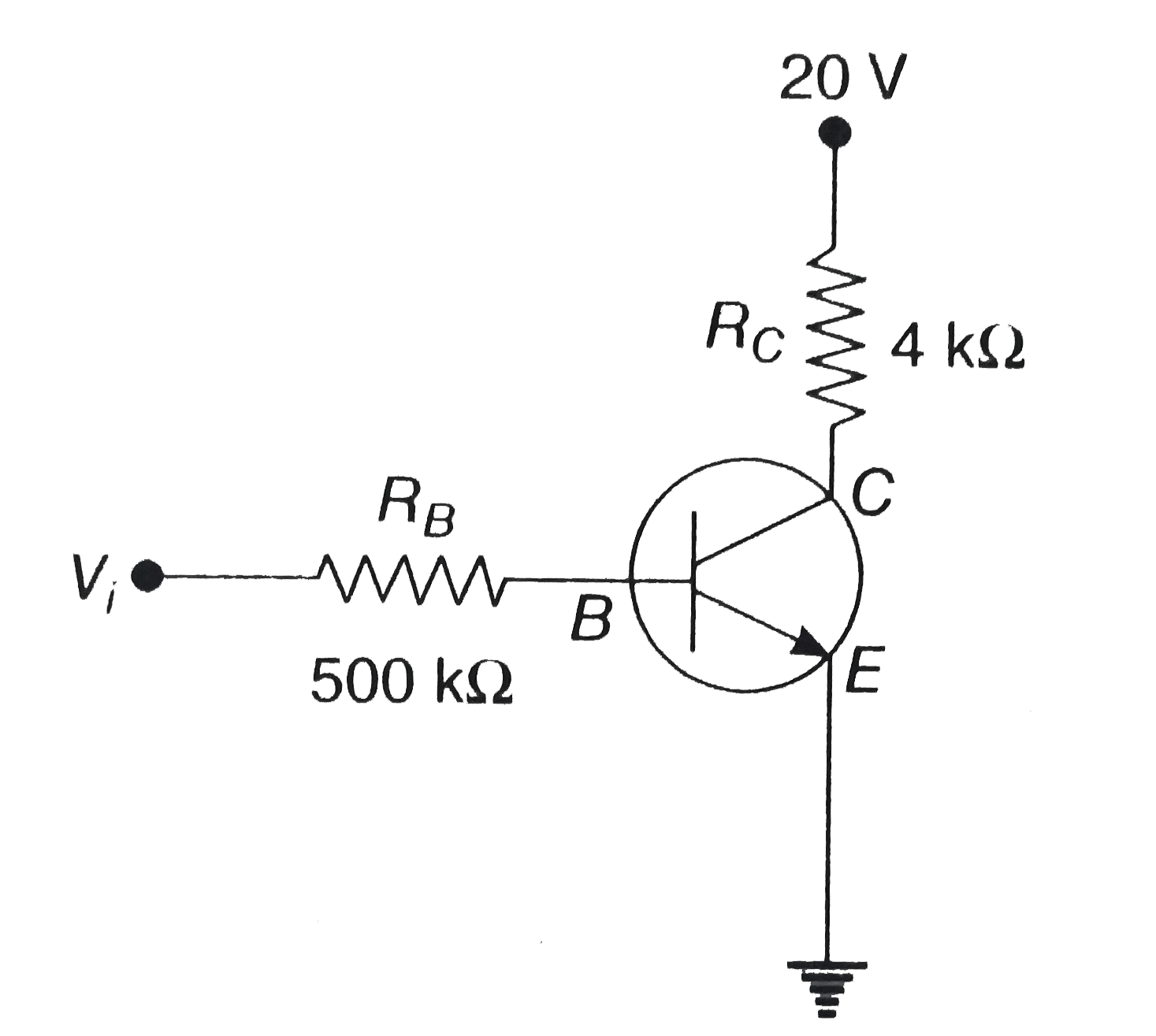L-C-R समान्तर प्रत्यावर्ती धरा परिपथ चित्र में प्रदर्शित किया गया है | माना IS,IL,IC तथा IR धाराओं को प्रदर्शित करते है तथा VS,VL,VC तथा VR क्रमशः वोल्टेज को प्रदर्शित करते है | तब,

IS=IL+IC+IR
VS=VL+VC+VR
(IL,IC,IR)<IS
IL,IC,IS से अधिक हो सकती है
The correct Answer is:D
समान्तर अनुनाद परिपथ में, L तथा C से गुजरने वाली धारा मुख्य धारा से अधिक हो सकती है | अर्थात IL तथा IC,IS से अधिक हो सकती है |
Topper's Solved these Questions
Similar Questions
कोई कण किसी सरल रेखा में इस प्रकार गति करता है कि उनका मंदन अपने विस्थापन के अनुक्रमानुपाती है। किसी विस्थापन के लिए इस कण की गतिज ऊर्जा का क्षय निम्नलिखित में से किसके अनुक्रमानुपाती है
View Solutionदूरदर्शी की विभेदन क्षमता निर्भर करती है
View SolutionIn the circuit shown in the figure, the input voltage Vi is 20V,VBE=0 and VCE=0. The values of IB,IC and β are given by:

View SolutionIn figure i_(1) = 10 e^(-2t) A, i_(2) = 4 A, v_(C ) = 3 e^(-2t) V The current i_(L) is
View SolutionIn the figure shown, i1=10e2tA , i2=4A and Vc=3e−2tV Determine
(a) iL and VL
(b) Vac , Vab and Vcd

View SolutionAn AC source is connected in parallel with an L-C-R circuit as shown.Let l_(s), l_(L), l_(C) " and " l_(R) denote the currents through and V_(s), V_(L), V_(C) " and "V_(R) the voltage across the corresponding componts.Then,
View SolutionIn the circuit shown in the figure, the input voltage V_(i) is 20V, V_(BE)=0 and V_(CE) = 0 . The values of I_(B) , I_(C) and beta are given by
View Solutionयदि किसी L-C-R परिपथ में VL,VR,VC तथा V0 क्रमशः प्रेरकत्व, प्रतिरोध, संधारित्र तथा स्रोत में लगे AC वोल्टमीटर के पाठ्यांक हों, तो :
View SolutionIn an L-C-R circuit, if V is the effective value of the applied voltage V_(R) is the voltage across R, V_(L) is the effective voltage across L, V_(C) is the effective voltage across C, then
View SolutionFigure shows a series LCR cicuit connected to a variable voltage source V=10sin(omegat+pi//4), x_(L)=10Omega, X_(c)=6Omega, R=3Omega Calculate Z, i_(0), i_(rms), V_(rms), V_(LO), V_(CO), V_(RO), beta, V_(LRms), V_(CRms), V_(Rms), i(t), V_(L)(t), V_(e(t)), " and " V_(R(t))
View SolutionIn a series L–C–R circuit, voltages across inductor, capacitor, and resistor are VL,VCandVR respectively. What is the phase difference between (i) VLandVR (ii) VLandVC ?
View SolutionIn a series LCR circuit, VL=VC≠VR. What is the value of power factor ?
View SolutionAn ac source of rms voltage V is put across a series combination of an inductor L, capacitor C and a resistor R. If VL,VCandVR are the rms voltage across L, C and R respectively then why is V≠VL+VC+VR ? Write correct relation among VL,VCandVR.
View SolutionL-C-R परिपथ में VL=VC=VR=10 वोल्ट है। C को लघुपथित करने पर स्रोत के सिरों पर वोल्टता होगी
View SolutionIn the above circuit, I_(C) =1.5 mA and beta = 100.Find I_(B) , V_(CE) and V_(BE)
View Solution
